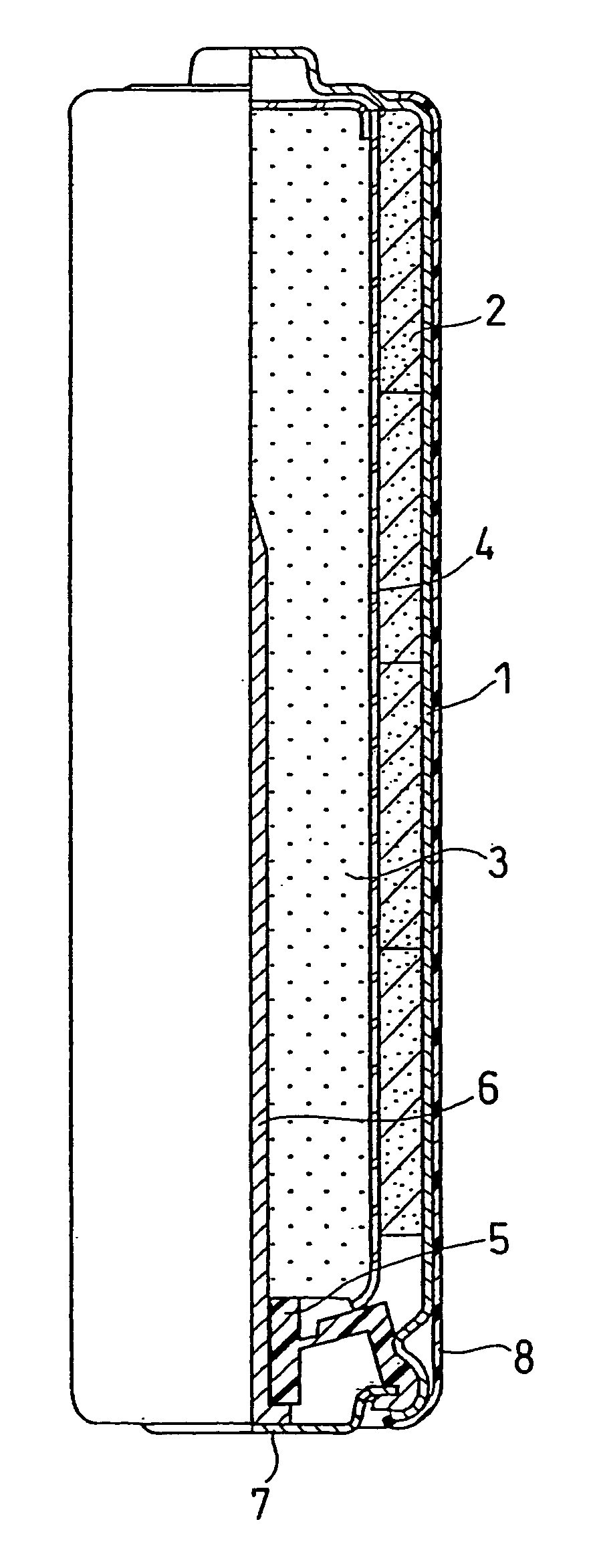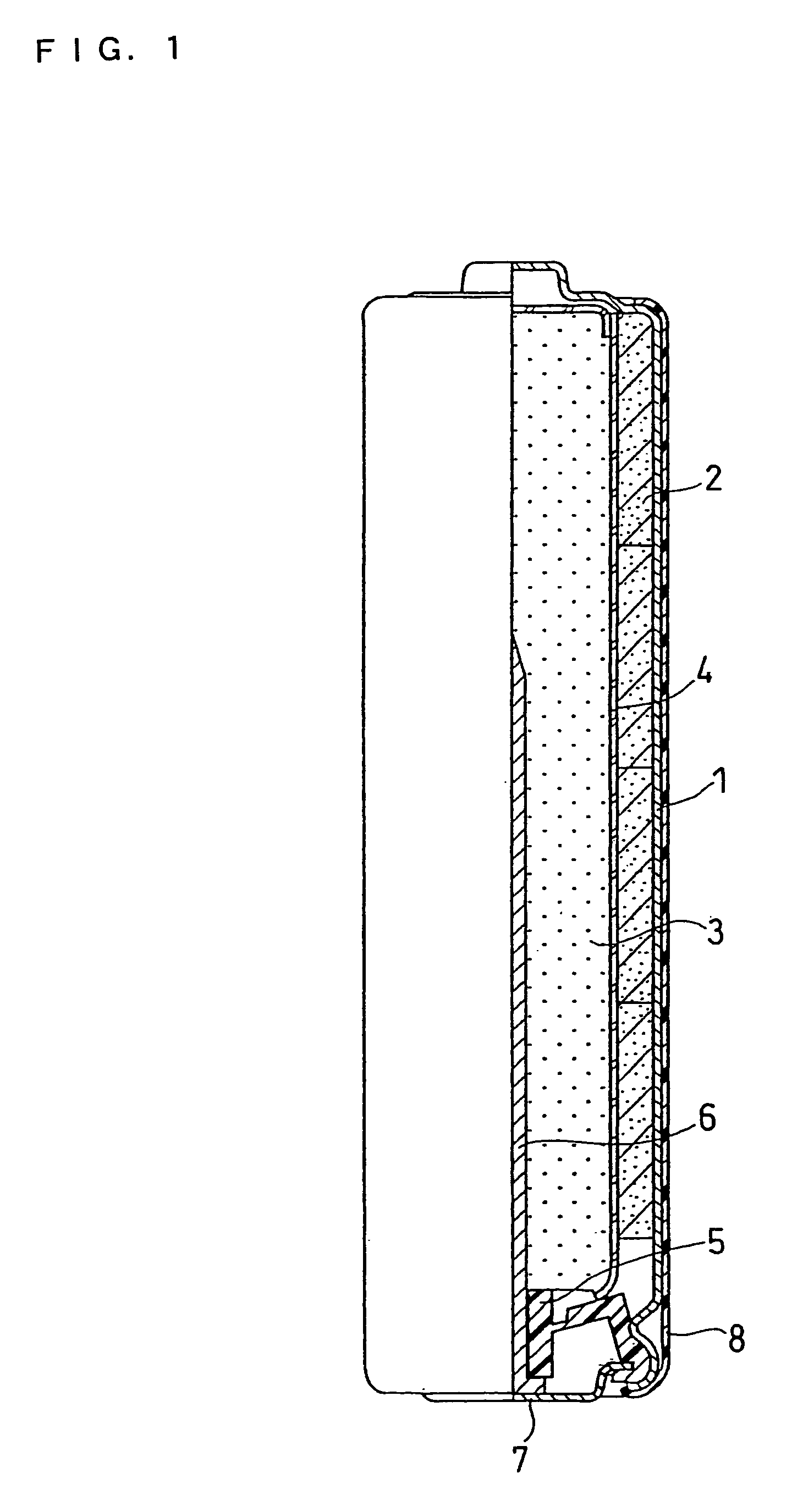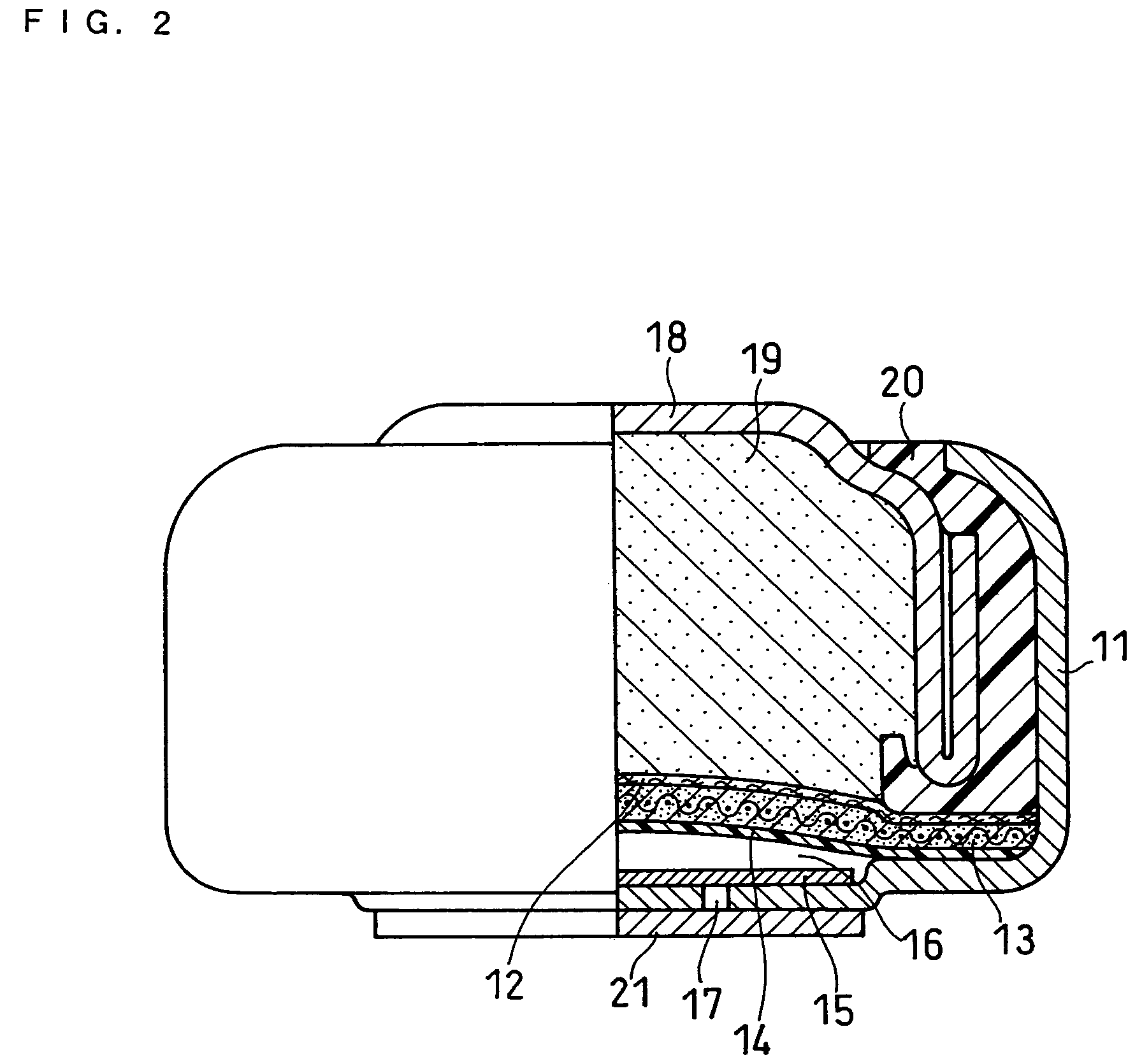Alkaline battery
a technology of alkaline batteries and batteries, applied in the direction of electrolyte/electrode capacity ratio, cell components, maintenance/servicing of primary cells, etc., can solve the problems of active material powder corrosion and electrolyte leakage, and achieve the effect of improving electrolyte leakage resistance and high-rate discharge characteristics
- Summary
- Abstract
- Description
- Claims
- Application Information
AI Technical Summary
Benefits of technology
Problems solved by technology
Method used
Image
Examples
embodiment 1
[0022]The structure of an alkaline dry battery is described with reference to FIG. 1, which is a partially sectional front view.
[0023]A battery case 1 contains a positive electrode mixture 2 in the form of short cylindrical pellets, a separator 4, and a gelled negative electrode 3. The battery case 1 may be a steel case whose inner face is plated with nickel. A plurality of the positive electrode mixture pellets 2 are contained in the battery case 1 so as to closely adhere to the inner face thereof. The separator 4 is placed on the inner side of the positive electrode mixture 2, and the gelled negative electrode 3 is filled in the space on the inner side of the separator 4.
[0024]The positive electrode mixture 2 is prepared as follows. First, manganese dioxide, graphite, and an electrolyte are mixed together in a weight ratio of 90:6:1. The resultant mixture is sufficiently stirred and then compression molded into flakes. Subsequently, the positive electrode mixture flakes are crushe...
embodiment 2
[0029]The structure of an air battery is described with reference to FIG. 2. FIG. 2 is a partially sectional front view of an air battery. FIG. 2 illustrates the structure immediately after the fabrication; due to discharge, zinc in the negative electrode changes to a zinc oxide and undergoes a volume expansion, so that the space in an air diffusion chamber 16 changes to a size that is so large as to accommodate only an air diffusion paper 15.
[0030]A case serving as the positive electrode terminal is represented by numeral 11 and contains a separator 12, an air electrode 13 and a water-repellent film 14 on the bottom. Under them is the air diffusion chamber 16 for accommodating the air diffusion paper 15. The water-repellent film 14 allows oxygen to be supplied to the air electrode 13 and prevents an electrolyte from leaking out of the battery. The air diffusion paper 15 permits uniform diffusion of air that is introduced from an air vent 17 in the bottom of the case 11 into the cas...
example 1
[0033]AA-type alkaline dry batteries as illustrated in Embodiment 1 and coin-type PR2330 air batteries as illustrated in Embodiment 2 were fabricated and evaluated for their characteristics.
[0034]The zinc or zinc alloy powders used were synthesized by atomization and classified. In consideration of gas production, the zinc alloys used were alloys containing at least one selected from the group consisting of Al, Bi, In, and Ca at 50 to 1000 ppm.
[0035]The specific surface areas of the zinc or zinc alloy powders were measured by a nitrogen adsorption method using an ASAP2010 analyzer available from Micromeritics Instrument Corporation. Preliminary drying of the powders (deaeration) were performed in a vacuum at 120° C. for 5 hours.
[0036]Table 1 shows the specific surface areas of the zinc and zinc alloy powders.
[0037]
TABLE 1Specific surfacearea of zincpowderMaterialMetal added to Zinc(m2 / g)A1None0.005A2None0.01A3None0.1A4None1A5None5A6None10A7None20A8Al0.005A9Al0.01A10Bi0.1A11In1A12Ca2...
PUM
| Property | Measurement | Unit |
|---|---|---|
| specific surface area | aaaaa | aaaaa |
| specific surface area | aaaaa | aaaaa |
| specific surface area | aaaaa | aaaaa |
Abstract
Description
Claims
Application Information
 Login to View More
Login to View More - R&D
- Intellectual Property
- Life Sciences
- Materials
- Tech Scout
- Unparalleled Data Quality
- Higher Quality Content
- 60% Fewer Hallucinations
Browse by: Latest US Patents, China's latest patents, Technical Efficacy Thesaurus, Application Domain, Technology Topic, Popular Technical Reports.
© 2025 PatSnap. All rights reserved.Legal|Privacy policy|Modern Slavery Act Transparency Statement|Sitemap|About US| Contact US: help@patsnap.com



